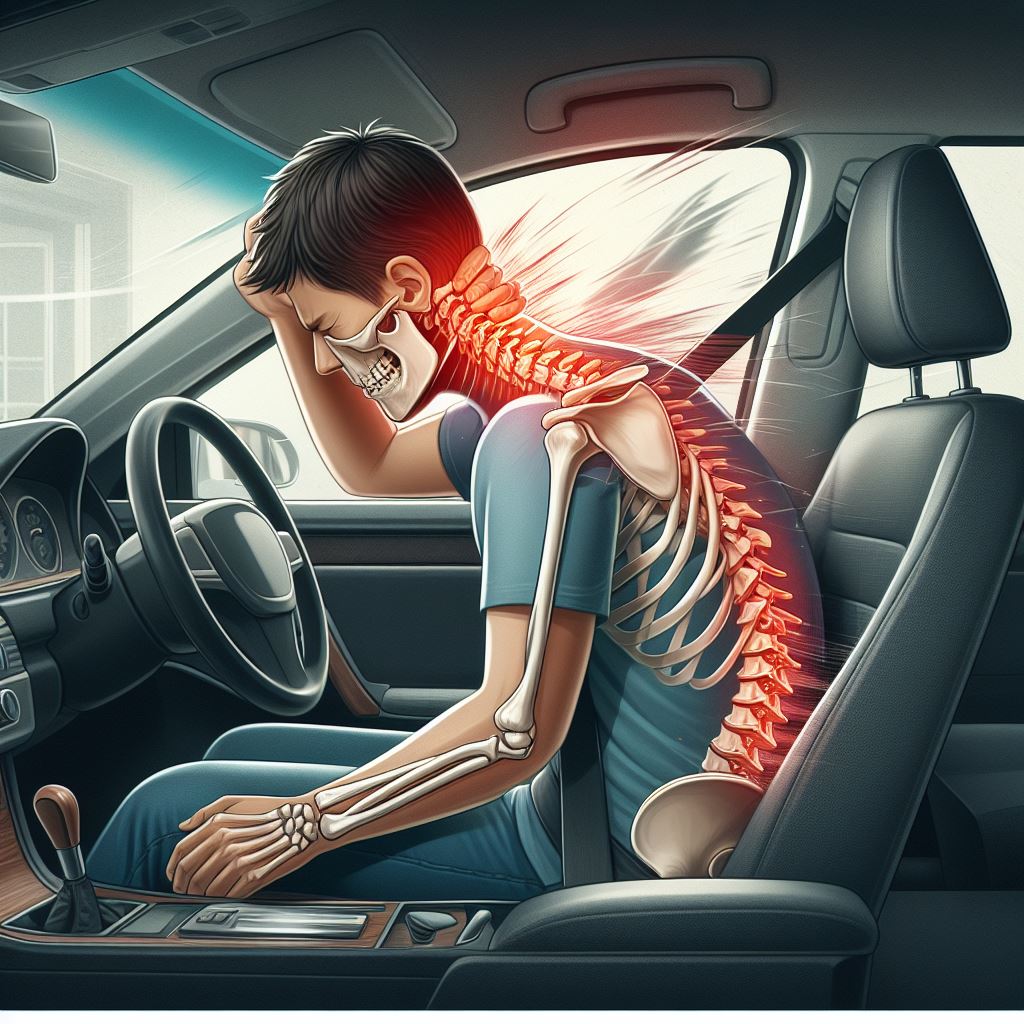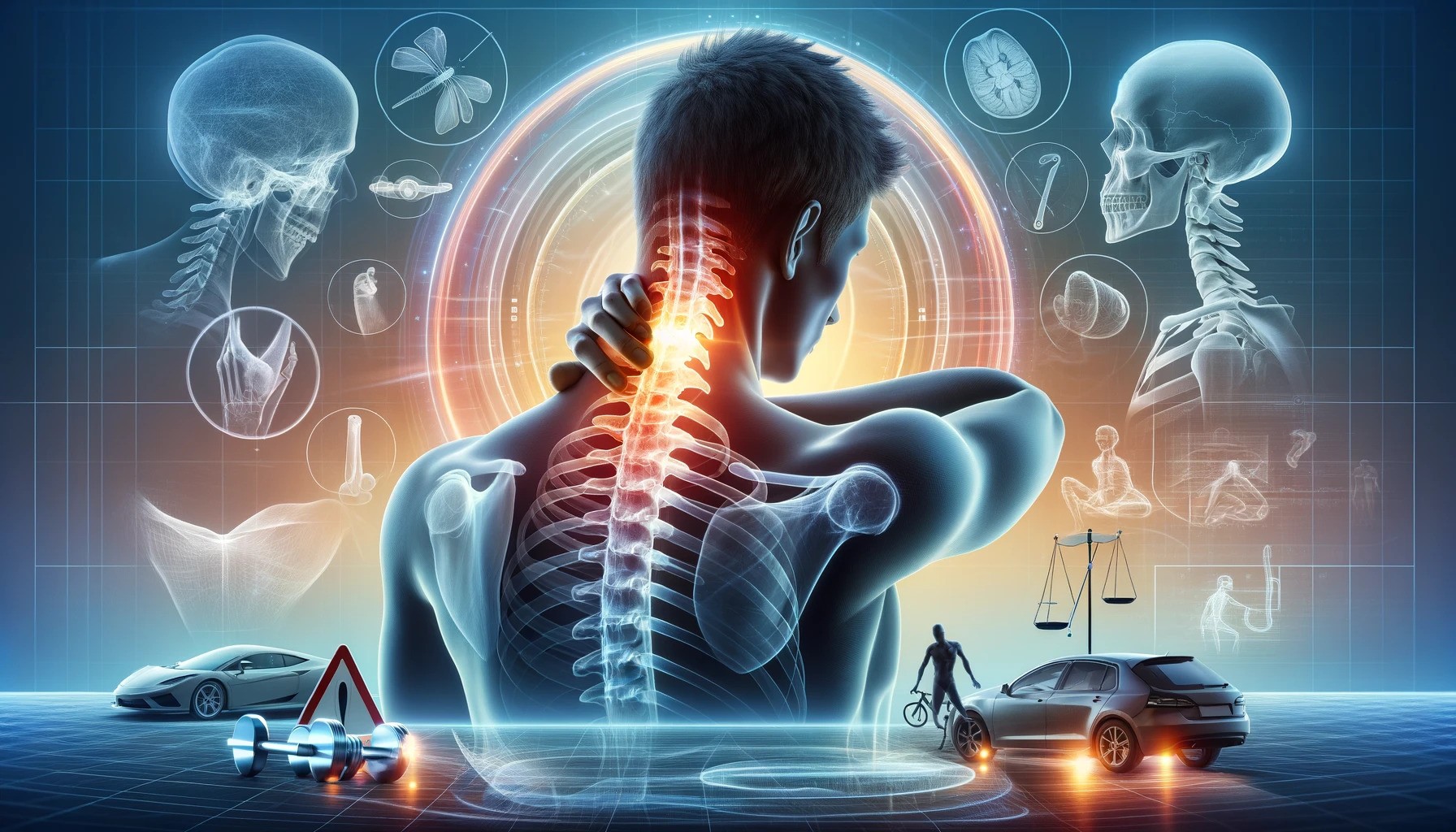Symptoms of Whiplash
Recognizing the symptoms of whiplash is crucial for prompt diagnosis and treatment. Common indicators include neck pain, stiffness, headaches, dizziness, and difficulty concentrating. Additionally, individuals may experience radiating pain in the shoulders and arms, along with potential cognitive and psychological effects such as anxiety or irritability.
Causes and Common Incidents
Whiplash is often associated with rear-end car collisions, but it can also result from sports injuries, falls, or physical assault. Understanding the common incidents that lead to whiplash is essential for individuals to assess their risk factors and take preventive measures.
Difference between Whiplash and Other Back Injuries
Distinguishing whiplash from other back injuries is crucial for accurate diagnosis and targeted treatment. While whiplash primarily affects the neck, other injuries may involve the thoracic or lumbar spine. Knowing these distinctions helps healthcare professionals tailor treatment plans to the specific nature of the injury.
Understanding Treatment Options
Recovering from whiplash involves a multifaceted approach, often combining medical intervention, physical therapy, and self-care. Treatment options may include pain medications, muscle relaxants, and anti-inflammatory drugs. Additionally, interventions such as heat therapy, cold packs, and neck collars may be recommended to alleviate symptoms.
Working with Healthcare Professionals
Collaborating with healthcare professionals is vital for a successful recovery. Establishing open communication with physicians, physical therapists, and specialists ensures a comprehensive and personalized treatment plan. Regular check-ins allow for adjustments to be made based on progress and any emerging issues.
Building a Recovery Plan
Creating a personalized recovery plan involves setting realistic goals and milestones. Factors such as age, overall health, and the injury’s severity play a role in determining the appropriate pace of recovery. A well-structured plan often incorporates a balance of rest, therapeutic exercises, and gradual increases in activity levels.
Physical Therapy and Exercise Regimens
Physical therapy plays a central role in whiplash recovery. Therapists employ exercises to improve neck flexibility, strength, and posture. Tailored exercise regimens help rebuild muscle tone and enhance overall mobility, fostering a faster and more complete recovery.
Preventative Measures and Long-Term Management
Preventing future occurrences of whiplash involves adopting good posture and body mechanics. Techniques such as maintaining a neutral spine position while sitting or driving and using supportive pillows can mitigate the risk of re-injury. Long-term management may also include ongoing exercises and lifestyle adjustments to promote neck health.
Importance of Posture and Body Mechanics
Maintaining proper posture and body mechanics is pivotal for preventing exacerbation of whiplash symptoms. Emphasizing the importance of ergonomic practices in daily activities, such as lifting objects correctly and using supportive seating, contributes to a sustained and healthy recovery.
Conclusion
Recovering from whiplash is a journey that requires patience, dedication, and a comprehensive approach. By understanding the condition, collaborating with healthcare professionals, and implementing a well-structured recovery plan, individuals can overcome the challenges of whiplash and move towards a healthier and pain-free future. Taking proactive measures and adopting a holistic approach to recovery not only accelerates healing but also reduces the risk of future incidents.
How we can help
We understand the challenges and discomfort that auto injuries can bring into your life. Whether you’re dealing with whiplash, back pain, or muscle tension resulting from an accident, our dedicated team is here to support you on your journey to recovery.
Contact us today to schedule a consultation and take the first step toward recovery and renewal.






